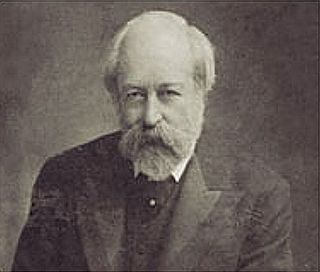
George Frederick Bodley was an English Gothic Revival architect. He was a pupil of Sir George Gilbert Scott, and worked in partnership with Thomas Garner for much of his career. He was one of the founders of Watts & Co.

Longbenton is a district of North Tyneside, England. It is largely occupied by an extensive estate originally built as municipal housing by Newcastle City Council in the 1930s and extended in the 1950s. It is served by the Tyne and Wear Metro stations Longbenton Metro station and Four Lane Ends Metro Station. Nearby places are Killingworth, Forest Hall, Four Lane Ends, West Moor, Heaton and South Gosforth, in Newcastle upon Tyne. The Longbenton and Killingworth Urban Area had a population of 34,878 in 2001. This figure increased to 37,070 in 2011.
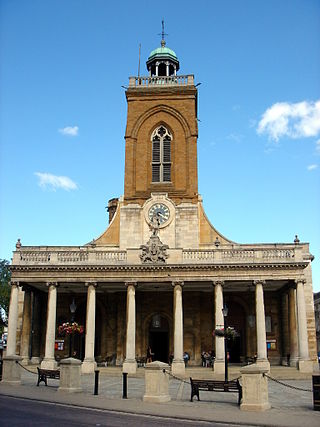
All Saints' Church, Northampton is a Church of England parish church in the centre of Northampton. The current church was largely built after a fire and was consecrated in 1680. It is a Grade I listed building.

The Parish Church of St Helier is the parish church of the parish of Saint Helier, Jersey. It is a Church of England church, one of the twelve 'Ancient Parish Churches' of Jersey, and serves as the Island's civic church and Pro-Cathedral.
Benton is an area of North Tyneside in Tyne and Wear, England. It is 4 miles (6 km) to the north east of Newcastle upon Tyne. The parish of St Bartholomew, Longbenton, is within the North Tyneside district. The population of the North Tyneside Ward taken at the Census 2011 was 10,359. The area is contiguous with the suburbs of Newcastle.
Forest Hall is a village in the borough of North Tyneside, Tyne and Wear, England. It is 4 miles from Newcastle upon Tyne. It borders Killingworth to the north, Holystone to the east and Benton to the south. The village has seen a slight increase in antisocial behaviour in recent years. The village was named after the Forest Hall, which incorporated a medieval tower. Woodside Court was built on the site of the Hall, which was demolished in 1962.

The Church of St Thomas the Martyr in Newcastle upon Tyne, Tyne and Wear, England. It is a prominent city centre landmarks, located close to both universities, the city hall and main shopping district in the Haymarket.

The Church of the Holy Trinity, Berwick-on-Tweed is a Church of England parish church in the centre of Berwick-upon-Tweed, Northumberland. It is a rare example of a church built in the Commonwealth era.

St Hilary's Church is in the town of Wallasey, Wirral, Merseyside, England. It consists of a church built in 1858–59 and the separate tower of a former medieval church. Both the church and the tower are recorded in the National Heritage List for England as designated Grade II listed buildings. The church is an active Anglican parish church in the diocese of Chester, the archdeaconry of Chester and the deanery of Wallasey.

St Bartholomew's Church is in the village of Thurstaston, Wirral, Merseyside, England. It is an active Anglican parish church in the diocese of Chester, the archdeaconry of Chester, and the deanery of Wirral North. The church is recorded in the National Heritage List for England as a designated Grade II* listed building.

Saint Chrysostom's Church is the parish church in Victoria Park, Manchester, England. The church is of the Anglo-Catholic tradition, and also has a strong tradition of being inclusive and welcoming.
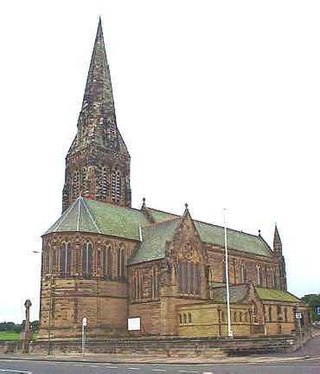
St George's Church in Cullercoats, Tyne and Wear, England, is a church built in the 19th-century French Gothic style. It is an active place of worship and is a Grade I listed building.

Saint Bartholomew's Church, Dublin, is a Church of Ireland (Anglican) parish church located on Clyde Road in Ballsbridge on the Southside of Dublin.

Wakefield Cathedral, or the Cathedral Church of All Saints in Wakefield, West Yorkshire, England, is a co-equal Anglican cathedral with Bradford and Ripon Cathedrals, in the Diocese of Leeds and a seat of the Bishop of Leeds. Originally the parish church, it has Anglo Saxon origins and, after enlargement and rebuilding, has the tallest spire in Yorkshire. Its 247-foot (75 m) spire is the tallest structure in the City of Wakefield. The cathedral was designated a Grade I listed building on 14 July 1953.

St Mary's Church, Moseley is a Grade II listed parish church in the Church of England located in Moseley, Birmingham. It is now part of a united benefice with St Anne's Church, Moseley. The War Memorial in the South-East corner of the Churchyard, facing Oxford Road, is unusual in that it depicts Christ upon the cross in carved stone. The War Memorial has achieved its own Grade II listing.

James Jepson Binns was a pipe organ builder based in Leeds, West Yorkshire, England.

St. Michael and All Angels Church, in Bassett, Southampton, is an Anglican parish church which dates from the late 19th century.
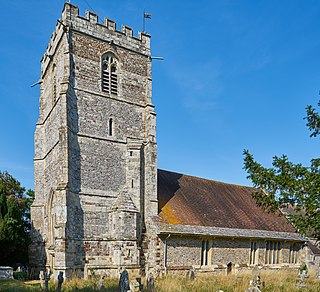
Cranborne Priory is a former priory church in the village of Cranborne, Dorset, England. Founded in 980 as Cranborne Abbey, it became a priory in 1102, remaining that way until it was dissolved in 1540. The tower, nave and aisles from the priory survive to form the Church of St Mary and St Bartholomew, the parish church of Cranborne. The building, which has fragments from the 12th century, is designated a Grade I listed building.
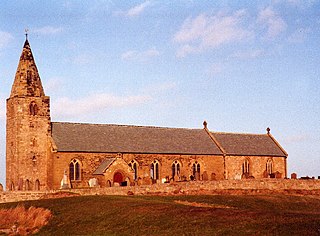
St Bartholomew's Church, Newbiggin-by-the-sea is the parish church of Newbiggin-by-the-Sea, Tyne and Wear, England. The building is part of the Diocese of Newcastle.
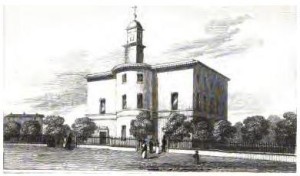
St James the Less’ Church, Ashted was a former Church of England parish church in Ashted, Birmingham.



















